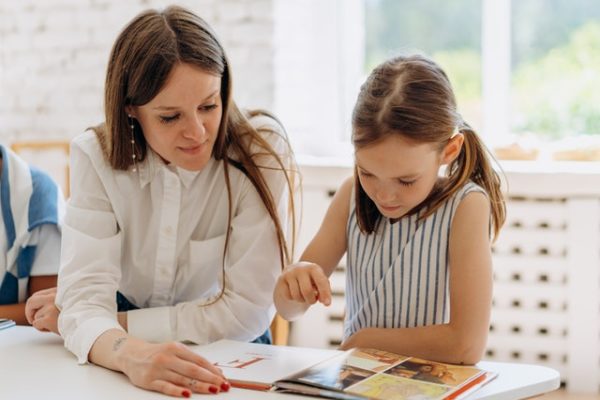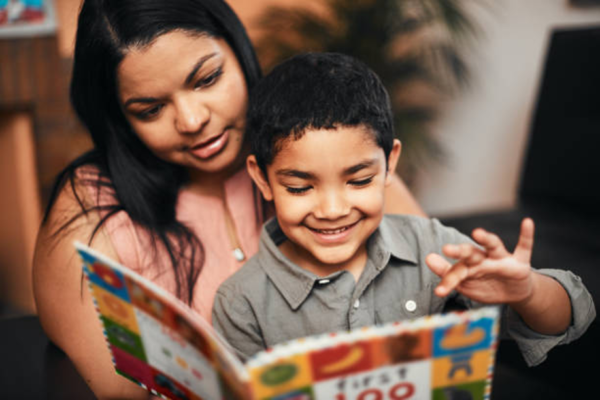The benefits of reading in childhood are many. After all, it is critical to developing children’s cognitive and communication skills. Long before learning to read, the little ones can already get familiarized with the book’s physical format, and they begin to understand that it has pictures, that these pictures tell a story, and so on.
Because of this, contact with books can never be called “early.” Reading, literature, imagination, storytelling – and storytelling – favor continuous learning, which we take for the rest of our lives.
In addition to this fundamental role of reading, the habit of reading also favors learning to write. Thus, in addition to being a great little reader, it is through contact with books that we form great little writers.
How about, then, exploring even more the powers of reading there in your home? It is precisely through shared reading that we see the strength of these beautiful habits: reading and imagining.
The benefits of childhood reading
In addition to being a delight to be done with the family, reading brings countless benefits to the child and, also, to the parents. See some of the impacts:
- It strengthens the connection with those who read to the child (parents, family members, or caregivers);
- Develops attention, concentration, vocabulary, memory, and reasoning;
- Stimulates curiosity, imagination, creativity;
- Helps the child to understand and deal with feelings and emotions;
- It helps in the development of empathy (ability to put yourself in the other’s shoes);
- Minimizes behavioral problems such as aggression;
- Develops oral language;
- It favors the learning of writing;
- It works as a continuous exercise in the organization of thought, which is expressed in speech and then in writing ;
- It’s a way to explore those themes that the child likes the most, informing and making communication more and more consistent.


Proper reading, combined with correct activities, generates incredible results
Therefore, books must always be part of the children’s universe. And, if possible, even from pregnancy!
There is no need to force any activity as learning comes naturally. Another important tip is to make reading part of the child’s routine, which makes this moment even more natural.
After all, this is exactly what we are looking for: to make this moment more common in homes, in different families and their different organizations. In this way, we turn reading into a moment of pleasure, reflection, and sharing. Reading doesn’t have to be a boring obligation.
Just as it is essential to provide adequate reading for each stage of the child, the way to encourage this reading also varies. We’ve listed some tips, separated by age, to make this moment even cooler!
Children from 0 to 1 year
1. Explore rubber, plastic, fabric, and textured books for free handling (because babies like to handle objects to get familiar with them);
2. Point to the pictures in the book and say out loud the name of what your child is looking at;
3. Turn the pages to your baby’s interest or help him turn;
4. Represent with gestures or with the voice the figure you are showing;
5. Imitate the sounds the baby makes and observe their reaction;
Children from 1 to 2 years old
1. Let the child choose a book they want to read with you;
2. Use different voices to represent the different characters in the stories;
3. Ask questions so the child can respond by pointing or speaking;
4. Encourage child to make the sound of a certain animal ;
5. Smile and respond when the child speaks or points ;
Children from 2 to 4 years old
1. Ask questions about the pictures in the book for the child to answer;
2. Read books that present actions that children already understand as unusual. For example: “The three cubs and the bad pig”;
3. Provide space for the child to comment on a picture or word, and value all the questions and comments the child makes;
4. Encourage the child to tell their favorite story, in their own way, without interference from you – remember that telling is also a way of recreating;
5. Show the child how things that happen in books are similar to what happens to us;


Children from 4 to 6 years old
1. Chat spontaneously about the subjects of the book;
2. Show the child that you are reading the words in the book, which allows them to identify the sound of each combination of letters ;
3. Read the story the way the author wrote it, without changing the strange and different words, which expands the child’s vocabulary;
Children from 6 to 8 years old
At this time of life, the child is already in a phase where imagination and creativity already have bigger wings to fly. In part, this is due to the literacy process and the path taken by the family throughout the formation of the young reader.
1. Always encourage your little reader to read to you and help them whenever they notice any difficulties, but without speeding up or excessively influencing the reading process;
2. Take turns reading whenever necessary, inserting the lines of the characters in the book or page by page;
3. Be careful and don’t make reading a burden for the child, or even an obligation;




